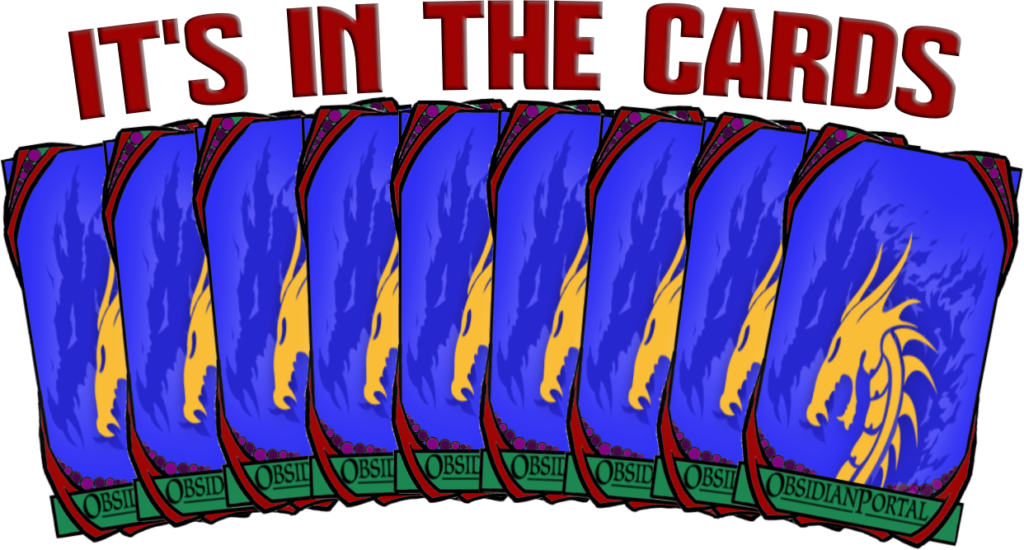Tag Archives: tips
Creator Spotlight | An Interview with Author Lou Anders
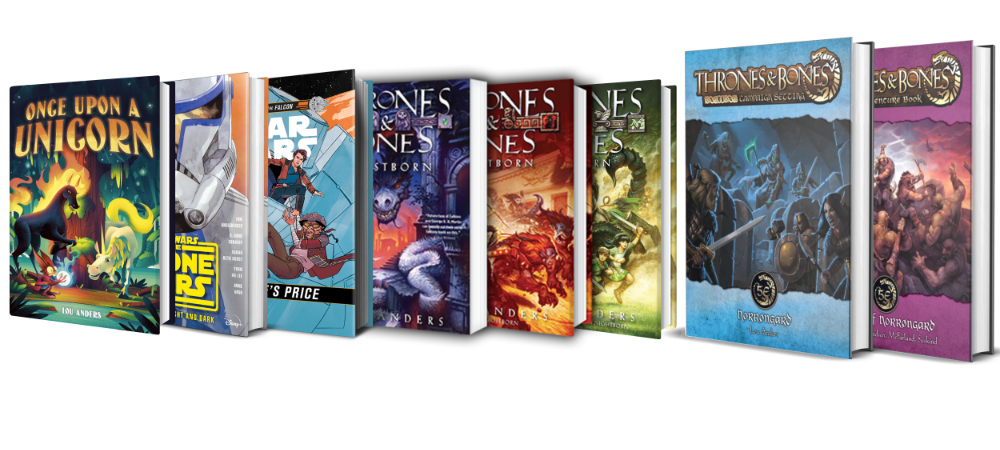
This week, we’re talking to Lou Anders of the acclaimed Thrones & Bones series!
Fans of all things Viking should be particularly excited, because Anders’ world is an ode to the rich history of the Norse legends and traditions, with some personal tweaks of his own that make for a truly fantastical setting. Based on the titular book series set in the lands of Norrøngard, Anders has brought his world into the world of tabletop gaming (currently compatible with D&D 5E, but read on for a sneak peek on what else to expect), allowing fans of the books an immersive experience of gameplay, and a whole new audience chances to tell their own stories in this richly-detailed world.
He has a whole line of materials that flesh out the world with playable classes, monsters, and adventures all stemming from Norrøngard.
He offers us insight into how he created this series, what it was like to bring that world to a different format, and what else we can look forward to from him in the future!
What initially drew you to the Norse mythos as an inspiration for your world, and what was it like to adapt your research into the world of Norrøngard?
When you say “initially” we have to go back to 2010, because the world was born first in the pages of my children’s novel before it was an RPG. In 2010, I was an editor in science fiction & fantasy publishing, running the Pyr books line, but noted anthologist Jonathan Strahan and I teamed up to co-edit a sword & sorcery anthology for Simon & Schuster called Swords & Dark Magic. It featured new and old authors of gritty fantasy writing S&S, including Michael Moorcock, Glen Cook, Steven Erikson, Garth Nix, C.J. Cherryh, Tanith Lee, others. During all this, I got inspired and tried to write my own short story (not for the anthology) about a “female Conan” who was half human, half frost giant. The story was, frankly, terrible. Really bad. But the character wouldn’t leave me. She stuck around, and then one day I realized that what was interesting about her was not her as an adult, but her childhood, what it was like to grow up half human in a village of giants. And that became my novel Frostborn. But I’m not a fan of monocultures. I never wanted to write “Viking Planet,” so from the start it was important to me that Norrøngard was just one country on the edge of a vast continent. Before I even started plotting, I had worked out their history across thousands of years and who they had interacted with in that time. I think I had twenty or so countries, many with their own gods and naming conventions and detailed history, before I ever wrote a line of prose. But as I started working out Norrøngard specifically, I looked at both history and mythology to build their culture. A lot of it was building out a backstory for a country the same way you’d build a backstory for a character. Figuring out where they came from, what they’d been through to get where they were, and who they were today. Also, it’s not 1:1 Norse myth. The Norrønir have their own creation myth, a different if analogous set of gods, a slightly different afterlife, and are at least a century passed their raiding period and living under an era with a Norrøngeld with their nearest neighbors (a “tax not to raid” that the king collects, inspired by the Danegeld of our world.)
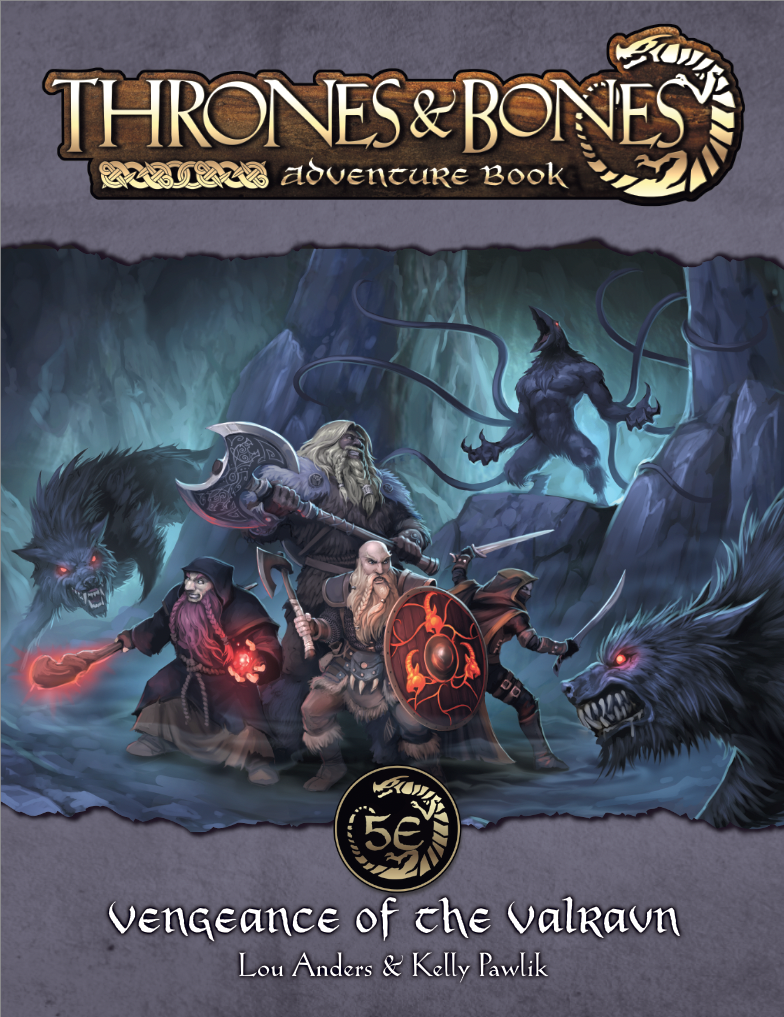
What was the process like to shift this world from a set story into a world that people can play in?
A lot of hard work! In Frostborn, we start in a human farm and a small giant village, visit only one city briefly, and spend most of the book in the wilderness. For Thrones & Bones: Norrøngard, I not only detailed the city of Bense but nine other Norrønian cities, with maps, details of their histories, key locations, their jarl, etc… Just the lore itself went through a major expansion, which doesn’t even begin to talk about creating the mechanics of ancestries and subclasses and rune magic and a bestiary, and all of that! It was a massive project that took over a year of full time work.
What was it like having multiple groups playtesting these supplements, and were there any surprising insights you can share about the playtesting process in general?
The best advice I can give about play testing is sign up way more groups than you need because half of them will never get to it and the other half will decide to veer off the rails and go in a direction that doesn’t help you much!
Your work clearly respects the Norse tradition and practices and having an actual Norse language consultant proves your dedication to authenticity. What was it like to work with an actual translator, and how much of their input helped to mold the world outside of just spelling suggestions?
Trond-Atle Farestveit is wonderful. He didn’t just translate things for me from English to ancient Norse. He’d work with me to get at the heart of what I was trying to do and help me pull from the culture to make sure it made sense in those terms.
-You’ve got a seriously robust bestiary, and aside from the Linnorms, my personal favorite is a tie between the Butter Cat and the Iron Dwarf. What was it like to playtest all of these creatures?
Playing with something you created yourself is a blast. Hearing from other folks playing and enjoying it is even more so. I’m really proud of a lot of those creatures and how their traits and actions keeps to the heart of how they are portrayed in myth and folklore.
Will fans of the books be able to see any familiar faces in these guides?
I deliberately kept the principal characters out of the game. The timeline in the RPG picks up one year after events in the books, and while I haven’t settled exactly where Thianna Frostborn goes after her journey to Thica, I know for a fact she’s not in Norrøngard right now. Neither is the dark elf Desstra. Karn *may* be back on his farm, or he may have gotten sidetracked heading home. But I didn’t want to “stat them out” and make them NPCs. So Stolki’s Mead Hall is in Bense, and Helltoppr is still in his barrow, but other than that, the RPG is populated with new characters. That being said, there are illustrations of them in the books – so you can technically see them.
Personally, I’m a sucker for any type of in-world games and activities that players can play as their characters. What was it like to make Thrones & Bones, Knattleikr, and Flyting as playable in the game?
Thrones & Bones came first. It dates back to when I was writing the first novel, Frostborn. The Norse played a game called hnefatafl before they discovered chess. In the novel, my female protagonist, Thianna, is a skilled knattleikr player. When I realized I needed a male co-protagonist, I wanted to give him something to be good at and it couldn’t be sports. So Karn Korlundsson because a hnefatafl player. I realized early on that I needed to know the rules—and there aren’t any. Not that we know. The Norse never wrote them down. There are quite a few reconstructions based on what we do know or can infer, and the various games in the tafl family can differ from each other a lot, right down to how many squares on the board and whether dice are involved. The more I looked into it, the more it made sense to create my own original game in the taft family. I built a board. Then I cherry picked rules from several of the best hnefatafl reconstructions, mixed in some of my own rules, and then play tested. I was fortunate in that my two oldest nephews were both chess champions in our state at the time, so I took them to Starbucks and set the game down between them, and they played each other for hours. I actually had to pry it out of their hands! That’s when I knew I had something. When it came to translating the novel into the game, including the game-within-a-game was a no brainer. Knattleikr came next. The rules for the sport are the only bit of text in the core book I didn’t write entirely by myself. I’d written rules, but then I hired designer Brian Suskind to write an adventure for the companion book, Sagas of Norrøngard. Brian didn’t like my rules and rewrote them. He fixed some things, but then he had me thinking about it, so I took what he did and made some changes, and we passed it back and forth until we had something we both liked. Flyting was a late addition, but I realized I needed all three of these Norse pastimes in the setting guide. And then it ended up coming into play in the second starter adventure.

You offer a lot of unique ancestries and class options for players in the Player’s Guide, what guided you through that process of progression, and do you have a personal favorite character build to make?
With all the designs, I wanted to go to the actual Scandinavian myth and folklore, especially with monsters and subclasses. My favorite build, and one that’s proving popular with players, is the huldra völva. Originally, the huldra were just monsters. But they are the “hidden folk,” and they interact so often with humans, I realized there were probably a lot of huldra living among the Norrønir in secret, and if they are there, then you should be able to play as one! The völva was tricky. But mostly because I put myself into a corner and then had to see my way out. My neighboring country of Araland is a faux-Celtic setting, so in my mind Araland is where you get druids. I was thinking of the völva as another spellcasting class—the name translates as “carrier of the magic staff” so I was trying to make them wizards—and it was just so much trying to force them into a box they didn’t want to go in. Finally, I took a step back and looked at what the völva actually were – wandering seeresses who could shapeshift, see the future, and control the weather, and I went, “Doh! That’s a druid.”
To take a quote from the introduction to your setting guide, “A map is nothing without a viewer.”
What has your experience been like working with artists to bring the world of Qualth to life with visuals with world and battle maps?
Working with artists is tremendous. I was an art director in SF&F publishing for 10 years, so I come to game design with experience working alongside illustrators and a deep appreciate for their talent. I’ve always been a visual thinker, so when I was writing novels, I was commissioning artwork and maps as I wrote—not for publication (the art in the book falls under the purview of the publisher’s art director), but just to help me visualize the world as its being created. From the start, I commissioned a lot of art from Andrew Bosley and maps from Rob Lazzaretti, while Justin Gerard did a lot of work for the novels that he kindly let me reuse for the game. When it came time for battle maps, there was no question it would be Heroic Maps. They are hands down my favorite cartographers in that space. I’m fortunate to have several great artists for the game I’ve worked with more than once—folks like Ksenia Kozhevnikova, William O’Brien, Craig J. Spearing, and Bryan Syme. One of the fun things too has been to work with William on “aging up” my three protagonists Thianna, Karn, and Desstra (she joins in book two). They are around 13 years old in the novels, but the game isn’t targeted at the same age group as the books, so I wanted to include “what they look like now” illustrations of older versions of my heroes. Then Effincool Minis actually made a 3D printable sculpt of the older Thianna, which thrills me beyond words.
One of my favorite items you’ve made is the Brúsi Shield (found in Sagas of Norrongard), a special shield that can summon a spectral goat’s head to make ramming attacks a few times per day. What has it been like to make unique weapons and artifacts, and what was your process to playtest them?
So, the Brúsi Shield is a bit of an in-joke. “Brúsi” is the Old Norse word for “he-goat,” and the earliest version of the tale “The Three Billy Goats Gruff” we have comes from Scandinavia, De tre bukkene Bruse. It’s a small spoiler to say so, but the shield is found in the adventure “From Svartálfaheim, with Love,” right before you encounter a troll on a bridge… As to playtesting, that’s the best part isn’t it?
Your game materials cover far more of the world than Karn and Thianna are able to visit and see, was there any area in particular you were personally excited about getting to explore in more depth?
All of it. I really worked hard to make each of the new cities we explore its own unique place. So Herkeby is laid out like a giant Trelleborg (ring fortress), Sindholm sits above an enormous cavern in which longships dock, Umsborg is bisected by a lava flow, and so on. With the recent Kickstarter, Vengeance of the Valravn, which takes place in Sindholm, we have adventures that take you everywhere but Oslendhom and Umsborg (though the lore from these two locations is, of course, in the core book). There are still places I want to explore one day though!
What work might fans look forward to in the future from you?
There is so much in the pipeline, and the recent OGL kerfluffle has only upped the number of projects. With the usual caveats about the “best laid plans,” here’s a run-down. Vengeance of the Valravn is in copyedits now. I hope to have it out in March. Then I’ll immediately Kickstart the already-written Tales from Stolki’s Hall. After being out of the editor’s chair for seven years, I’ve put that hat back on and reached out to some of the best fiction writers I used to work with. Stolki’s Hall is an anthology of adult fantasy stories, written not by me, but by ten other authors, set in the land of Norrøngard. It’s fantastic, and I can’t wait for people to read it. I’ve also just signed contracts for two conversions of the campaign guide, Thrones & Bones: Norrøngard, to two other systems. I’ll probably turn to Kickstarter again for those, not for the budget (it’s a done deal with budget already set aside), but for the visibility. Beyond that I’ve got an idea for something “mythos related” in the world of Qualth that I want to do. I’ve already outlined and started commissioning and receiving art for the next Big Project, which is the first adventure set outside of Norrøngard. It starts off in Nelenia, a country that is in the middle of the continent of Katernia, about a thousand miles from Norrøngard, and modeled loosely on Switzerland. I’m really excited about this adventure, which I hope to announce by year’s end, but given the aforementioned list of projects, it might slide into 2024. When it does debut, it will most likely be multisystem, so they’ll be 5e, Pathfinder 2, and other versions. I think it only makes sense going forward not to put all the eggs in one basket, which means my tiny indie, Lazy Wolf Studios, is set to grow whether it wants to or not!
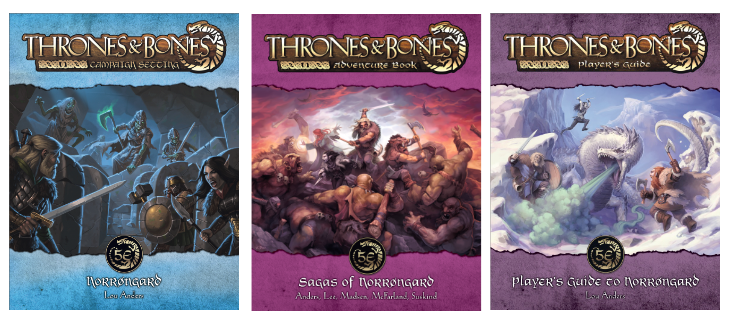
Lou Anders is the author of the novel Once Upon a Unicorn, as well as the Thrones & Bones trilogy of fantasy adventure novels (Frostborn, Nightborn, and Skyborn), and the novel Star Wars: Pirate’s Price. He has also done role playing game design for Kobold Press, River Horse, and 3D Printed Tabletop. In 2016, he was named a Thurber House Writer-in-Residence and spent a month in Columbus, Ohio teaching, writing, and living in a haunted house. When not writing, he enjoys playing role playing games, 3D printing, and watching movies. He lives with his wife, children, and two golden doodles in Birmingham, Alabama. You can visit Anders online at louanders.com, on Facebook, Instagram, and on Twitter at @Louanders.
New YT Series – It’s In the Cards
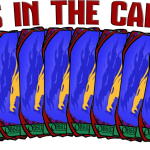
Writer’s block? Need a quick method to generate a storyline or adventure for your next game? Obsidian Portal’s Conan_Lybarian has a new technique. Find some trading cards or an old CCG and follow a few simple rules – It’s In the Cards!
Tuesday Tips: OP Maps

Maps and RPG’s are like peanut butter and chocolate, and they’ve been that way since J. “Rowdy-Roddy” Tolkien and his generation first started adding fantasy cartography inside the front covers of their books. Maps are stories unto themselves. Obsidian Portal has a special section just for maps for your campaign(s), and they can really add a lot of visual interest to your legendary layout. Assembled here are a few tricks and tips to help you advance your atlas onto your page.
Portal Tip: Getting Your Players To Use The Tools
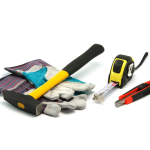
Dungeon Masters on Obsidian Portal are often faced with the problem of how to motivate their players to use the online tools available. Today I’d like to share some ideas and approaches that will hopefully help in that regard.
Now it’s true that DMs spend much more time on their campaigns than most players do. After all they are responsible for entire worlds while players only have their characters to worry about. Add in factors like day jobs, lack of time between games, and other real world concerns and it can be hard to get them to take the time.
Introducing: Tip Tuesday

The Melting Pot
Obsidian Portal is what we make of it, the entire site itself is an ever growing and strengthening mass of awesome contributions and gaming greatness – created by all of us and I’m especially honored to be part of the team pushing it all forward.
I’d really like to chip in a bit of my own flavor to some of our weekly activities, so I think it’s about time I added a little bit of my own spice to this Obsidian Portal grog we knock back each day.

